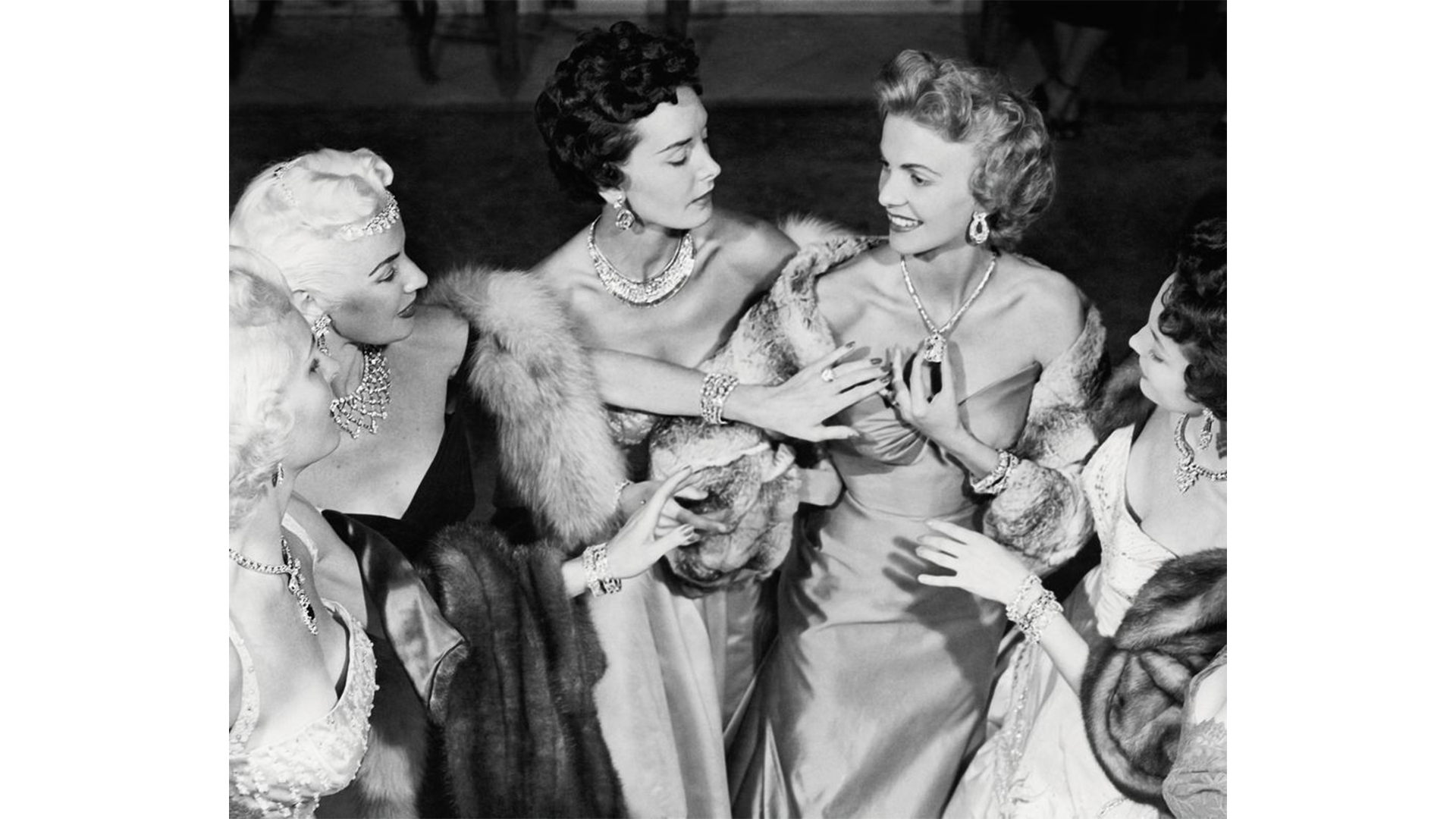Dubbed the “King of Diamonds” by Cosmopolitan magazine in 1947, jeweler Harry Winston was also the King of Philanthropy. He blended his love of diamonds and gemstones with his penchant for charitable causes to create one of the most celebrated fund-raising events in jewelry: The Court of Jewels.
Harry Winston Talks About Gems

The year was 1949 and Harry Winston just happened to have more historic and important diamonds and jewelry than usual, some of which had been purchased after World War II when people were selling jewelry to survive. The collection was impressive and Life magazine, had noted that the only other collection of jewels as fine as Winston’s was the British Crown Jewels. People weren’t used to seeing spectacular jewelry, except perhaps in the movies, and Mr. Winston was betting that they would be eager to see his treasures.
Gems and jewelry brought so much pleasure to Mr. Winston that he wanted to share that experience with the rest of the world by informing the public about gems. It was his desire that people understand and appreciate gems in the same way that he did.
In the book Harry Winston: The Ultimate Jeweler, by Laurence Krashes, formerly a vice president of the firm, Mr. Winston’s feelings are revealed. “I want the public to know more about precious gems,” Winston explained, “With so much expensive junk jewelry around these days, people forget that a good diamond, ruby, or emerald, however small, is a possession to be prized for generations.”
Harry Winston and His Court of Jewels

As a result, Mr. Winston created the Court of Jewels, a collection comprised of famous gems and jewelry, which were then toured around the country for various exhibitions where people paid to see the jewels. The first exhibition was held in New York City’s Rockefeller Center between November 23 and December 30, 1949 to benefit the United Hospital Fund. Another important charity that benefitted from the Court of Jewels was the National Foundation for Infantile Paralysis (now the March of Dimes).
The collection was comprised of a number of jewels that we know today because Mr. Winston put them out in the world. The centerpiece of the collection was the infamous Hope Diamond. It also included The Star of the East diamond, The McLean Diamond, the Jonker I Diamond and the emerald and diamond Inquisition Necklace, that Katherine Hepburn wore in 1947. His strategy seemed to work since to this day we’re still talking about those remarkable jewels and the good they did.
The Court of Jewels Travels

Over the next four years, between 1949 and 1953, the Court of Jewels toured major U.S. cities, Europe and Cuba, where jewelers in each locale hosted events around the collection that raised money for local charities. Along the way some of the jewels sold and were replaced with other impressive pieces. However, by 1953 the costs of touring the collection had become prohibitive and the Court of Jewels was halted.
“The Court of Jewels is at the root of Winston’s philanthropic endeavors,” explains Angela Hedges, jewelry consultant and former Harry Winston Archivist. “These events were hosted across the nation raising money and benefiting local hospitals and charities for women and children.”
Even though the Court of Jewels was no longer touring, Mr. Winston continued to loan out the Hope Diamond for charity events before donating it to the Smithsonian Institute in 1958, as a gift to the American people.
Court of Jewels Revived
In November of 2010, Harry Winston recreated the Court of Jewels, showcasing $1 billion worth of jewelry, for an evening. The event was attended by numerous celebs who were on hand for the unveiling of the Hope Diamond in its new setting, Embracing Hope, which was a temporary mounting for one year. That night also marked the announcement of a new charitable endeavor for the firm, The Harry Winston Hope Foundation, which supports educational causes by donating a minimum of 5 percent of the jewelers pre-tax profits. The King of Diamonds continues to be the King of Philanthropy spreading dollars for good.
Featured image (top of page): The social set admires the Jonker I Diamond, courtesy Harry Winston.
Authored by Amber Michelle
